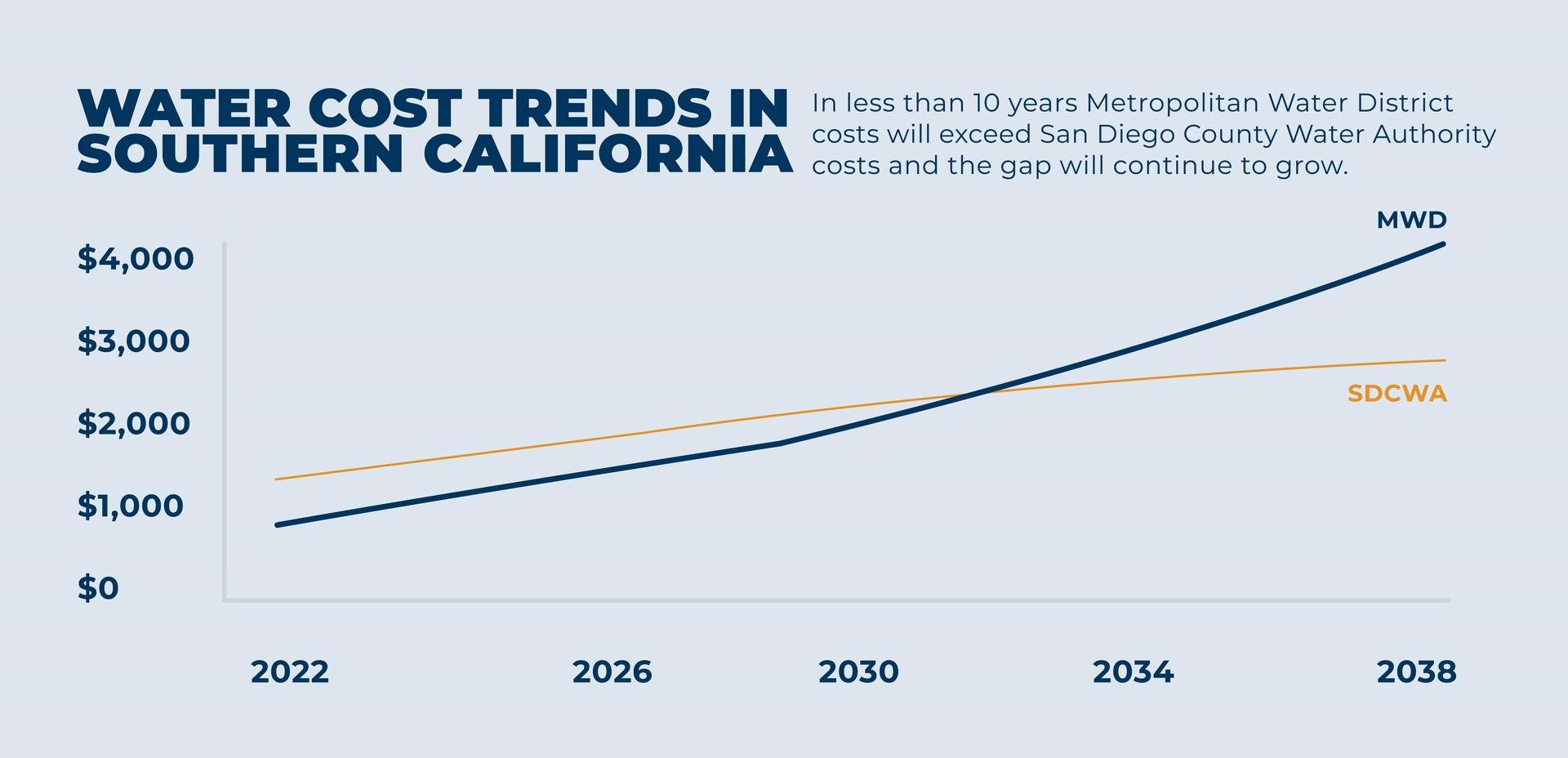Every year at this time, water agencies launch the long and thoughtful process of setting rates for the next year. It’s always complex and challenging – and in 2022 we’re starting in an even tougher spot due to larger economic uncertainties that are compounded by inflation.
Thankfully, the Water Authority strategically invested in supply reliability in decades past when costs and inflation were lower – and we are reaping the benefits of those investments during the worst megadrought in 1,200 years. Further, the Water Authority’s locally controlled sources have cost-control measures built into the contracts to help guard against sudden price increases.
However, water costs in San Diego County are heavily influenced by the Metropolitan Water District of Southern California. And now, MWD is proposing the largest increases in more than a decade – 17% over the next two years.
Under new management, MWD is undertaking several long-range financial and planning efforts while beginning an investment cycle to ensure its future water supply will be reliable. Over the next several years, MWD is starting a $3.7 billion recycled water plant in Carson followed by a multibillion-dollar tunneling project in the Bay-Delta. While these are important projects for MWD to shore up its supplies – especially for their member agencies that may have cutbacks due to their location in MWD’s system – they will drive up the cost of water from MWD far faster than the cost of Water Authority water. One result is that MWD’s water is expected to be more expensive than our supplies within the next decade (as shown in the chart).

On behalf of our member agencies, farmers, small businesses, and you, we are asking MWD to prioritize affordability and aggressively control costs before imposing significant rate increases. We have worked very hard to do that at the Water Authority and we are committed to advocating on our region’s behalf at MWD while supporting the very important work they do.




